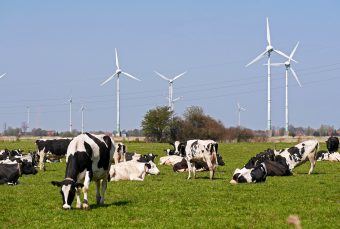
UK greenhouse gas emissions fell nearly four per cent last year, continuing a long-running trend that has seen the country’s emissions drop 38 per cent since 1990.
The latest official statistical release from National Statistics today confirms total greenhouse gas emissions in 2015 reached 495.7 million tonnes of carbon dioxide equivalent (MtCO2e), a fall of 3.8 per cent on 2014 levels.
The performance puts the UK comfortably on track to meet the legally-binding second carbon budget period, which runs through to 2017. National Statistics said every year since 2013 has resulted in emissions well below the average emissions level dictated by the annual budget of 556.4 million tonnes of carbon dioxide equivalent.
The latest report credits the strong performance in 2015 on significant progress from the energy, business, and waste management sectors, each of which delivered sizeable reductions in emissions.
The report said emissions from the energy sector were down 12.3 per cent in 2015 to 20.1 MtCO2e thanks to “a large decrease in power station emissions due to a change in the fuel mix for electricity generation, with a decrease in the use of coal and more use of nuclear and renewables”. The trend is expected to have continued during 2016, as the energy sector set a series of new records for renewables output and low levels of coal use throughout the year.
Similarly, the report confirms emissions from the business sector fell 2.6 per cent in 2015, largely due to a reduction in emissions from fuel used in the iron and steel sector caused by the closure of one of the UK’s three integrated steelworks. And emissions from the waste management sector fell 7.1 per cent due to decreased emissions from landfill.
The results continue an impressive trend for the green economy, which has seen emissions from the energy sector plummet 48 per cent since 1990, while emissions from waste have fallen 73 per cent and emissions from business have dropped by more than a quarter against the same baseline.
However, the report also confirms the UK is struggling to deliver emissions reductions in some of the sectors where savings are required if the country is to meet its medium to long-term emissions targets.
For example, emissions from agriculture remained flat year-on-year in 2015, while transport emissions rose two per cent, emissions from land use change inched up one per cent, and emissions from the residential sector climbed four per cent. The report noted that the increase in household emissions was mainly the result of colder weather, but critics have long warned insufficient progress is being made in improving the energy efficiency of UK homes.
The report concludes the UK is on track to meet its Climate Change Act targets for the current and next budget period, which run through to 2022. But it reiterates concerns the country is currently projected to breach the fourth budget for the period from 2023 to 2027.
The government has promised to come forward with a plan later this year detailing how it intends to close the projected emissions gap and meet the fourth and fifth carbon budgets that run through to the early 2030s.
Consequently, green industries are eagerly awaiting more information on how Ministers plan to accelerate the roll out of green heat, transport, energy efficiency and clean power generation technologies, while also tackling emissions from agriculture and land use.
Source: businessgreen.com


